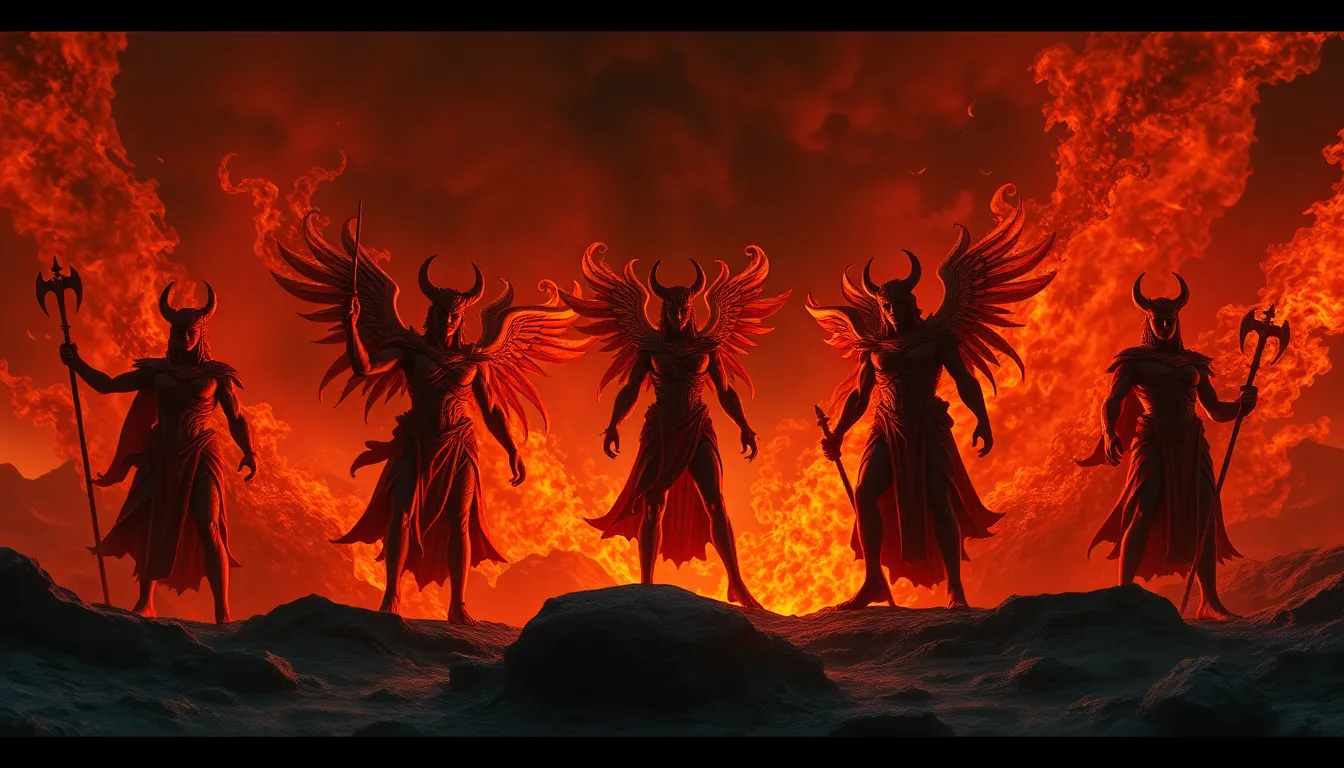The Furies: An Exploration of Their Relationships with Heroes and Villains
I. Introduction
The Furies, known as the Erinyes in ancient Greek mythology, are fierce deities associated with vengeance and retribution. Often depicted as winged women with serpents in their hair, they embody the darker aspects of justice and moral order. Their primary role in myths is to pursue wrongdoers and ensure that justice is served, making them pivotal characters in the narratives of both heroes and villains.
This article will delve into the multifaceted relationships The Furies have with various figures in mythology, exploring their importance in tales of heroism and villainy. By examining their origins, their role in the concept of justice, and their interactions with key characters, we aim to uncover the deeper significance they hold in Greek mythology.
II. The Origins of The Furies
The origins of The Furies can be traced back to the earliest Greek myths, where they are often depicted as chthonic deities, emerging from the underworld. They are usually considered daughters of Gaia, the Earth, and the blood of Uranus, the Sky, which signifies their connection to ancient primordial forces.
Symbolically, The Furies represent vengeance and justice, acting as enforcers of moral order. Their relentless pursuit of those who commit grievous sins reflects the ancient Greeks’ understanding of balance in the cosmos. Over time, their portrayal evolved from fearsome deities to more complex literary figures who highlight the nuances of justice and retribution.
III. The Furies and the Concept of Justice
The Furies serve as vital enforcers of cosmic order, ensuring that justice is upheld throughout the realms of gods and mortals. They are often called upon to punish transgressors, particularly those who have committed familial or societal wrongs, such as murder or betrayal.
Their duality is a significant aspect of their character: while they are relentless in their pursuit of wrongdoers, their actions raise questions about the nature of justice itself. The tension between retribution and mercy is a recurring theme in their narratives, as they reflect the complexities of human morality.
IV. Relationships with Heroes
The Furies have complex interactions with classical heroes, often serving as both adversaries and catalysts for their growth. One of the most notable examples is Orestes, who, after avenging his father’s murder by killing his mother, is pursued by The Furies for his crime.
- Moral Dilemmas: Heroes like Orestes face profound moral dilemmas when confronted with The Furies. They must navigate the consequences of their actions while grappling with guilt and the desire for vengeance.
- Impact on the Hero’s Journey: The presence of The Furies often acts as a turning point in a hero’s journey, forcing them to confront their own morality and the repercussions of their choices.
V. Relationships with Villains
The Furies are relentless in their pursuit of villains, ensuring that those who commit heinous acts face the consequences of their actions. Figures such as Medea and Agamemnon have come under their wrath, highlighting the Furies’ role as embodiments of vengeance.
- Medea: After murdering her children and betraying her husband, Medea becomes a target for The Furies, representing the severe consequences of her villainy.
- Agamemnon: Upon returning from the Trojan War, Agamemnon faces the wrath of The Furies due to his past transgressions, demonstrating that even celebrated heroes are not immune to their judgment.
Through these encounters, the consequences of villainous actions are starkly illustrated, emphasizing the moral order that The Furies uphold.
VI. The Furies in Literature and Modern Adaptations
The Furies have been represented in various ancient texts, most notably in Aeschylus’ “Oresteia,” where their role as avengers of bloodshed takes center stage. This trilogy explores themes of justice, revenge, and the transformation of societal norms regarding punishment.
In modern literature, film, and art, The Furies continue to inspire representations of vengeance and justice. They have appeared in works ranging from classical adaptations to contemporary narratives that explore psychological and moral themes.
- Literature: Authors often reinterpret The Furies, presenting them as complex characters that challenge traditional notions of justice.
- Film: Cinematic adaptations often depict The Furies as haunting figures that embody the consequences of one’s actions.
- Art: Visual representations of The Furies capture their fearsome nature while also exploring their symbolic significance in human morality.
VII. The Psychological Dimension of The Furies
The Furies can be viewed as archetypes of guilt and retribution, embodying the psychological struggles that arise from wrongdoing. They serve as manifestations of internal conflicts faced by individuals grappling with their own moral choices.
By exploring their influence on human emotions, we can see how The Furies intersect with themes of justice, guilt, and psychological torment. The dynamics between heroes, villains, and The Furies reveal deep-seated anxieties about morality and the consequences of our actions.
VIII. Conclusion
In conclusion, The Furies play a crucial role in shaping narratives within Greek mythology, embodying the complexities of justice and morality. Their relationships with heroes and villains illustrate the struggles of human existence, where the lines between right and wrong are often blurred.
The enduring legacy of The Furies in mythology and culture reflects our ongoing fascination with the themes of vengeance, justice, and the moral dilemmas that define the human experience. As we continue to explore these ancient figures, we gain insight into the timeless questions of morality that resonate across generations.




